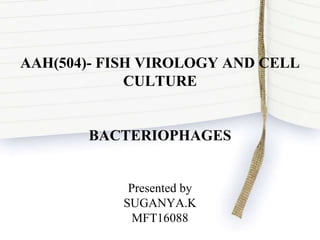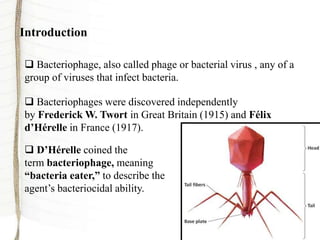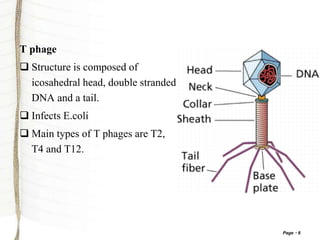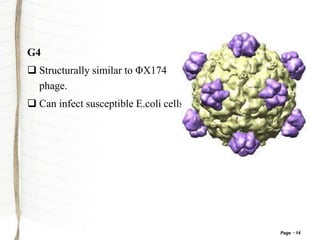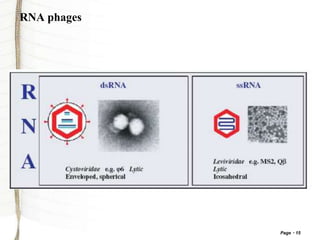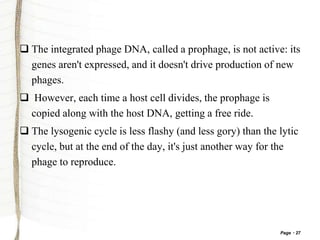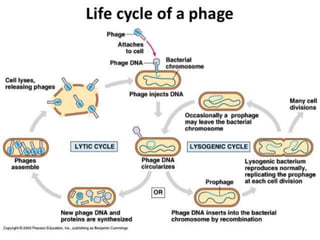Bacteriophages, or phages, are viruses that infect bacteria. There are two main life cycles for phages: lytic and lysogenic. In the lytic cycle, the phage hijacks the bacterial cell to produce new phages then causes the cell to burst. In the lysogenic cycle, the phage inserts its DNA into the bacterial chromosome where it remains inactive until conditions trigger the lytic cycle. Phages have many applications including phage therapy to treat bacterial infections, using phage lysins as antimicrobials, and phage display to identify molecules that bind to targets of interest.
